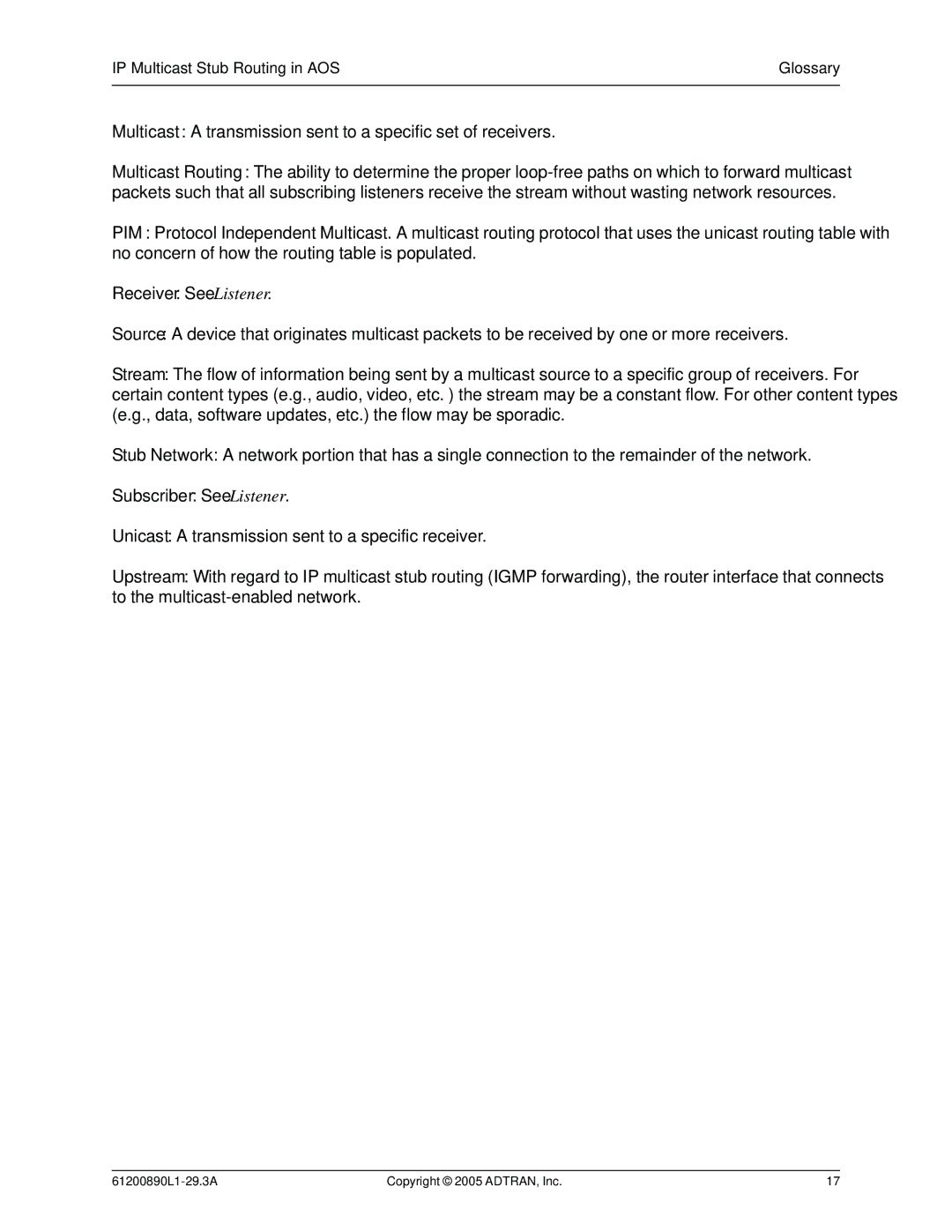Stub Routing specifications
ADTRAN Stub Routing is a routing technique engineered to enhance the efficiency and performance of network traffic management in various telecommunications and data networking scenarios. As organizations expand their networks and connect diverse locations, the routing processes become increasingly complex. ADTRAN Stub Routing addresses these complexities by providing a streamlined approach to manage data flow effectively.One of the main features of ADTRAN Stub Routing is its ability to optimize the routing table, which helps in minimizing the overhead caused by unnecessary routing information. Unlike traditional routing protocols that may require extensive updates and maintenance, stub routes are simplified pathways that provide direct paths to specific destinations without the complexities of a full-fledged routing mechanism. This leads to quicker convergence times and better overall network performance.
ADTRAN leverages advanced technologies that enable Stub Routing to operate seamlessly, such as Border Gateway Protocol (BGP) and Open Shortest Path First (OSPF). BGP assists in managing how data packets are routed between different autonomous systems, ensuring efficient data exchange while preventing routing loops. OSPF, on the other hand, supports dynamic routing updates and facilitates communication within smaller, more manageable networks, allowing for a responsive approach to changing network conditions.
Another characteristic of ADTRAN Stub Routing is its support for both IPv4 and IPv6 addressing, making it versatile for modern networks that require transition capabilities between these two protocols. By accommodating both formats, organizations can smoothly integrate new devices and services without disrupting existing operations.
Moreover, ADTRAN Stub Routing provides robust security features. It helps mitigate risks such as route hijacking and denial-of-service attacks by leveraging authentication mechanisms and route filtering. This ensures that only legitimate routes are accepted and reduces vulnerabilities in the network.
In summary, ADTRAN Stub Routing stands out for its efficient management of routing tables, integration with advanced routing technologies, support for multiple IP protocols, and focus on security. By implementing Stub Routing, organizations can achieve greater reliability and efficiency in their network operations, ultimately leading to improved user experiences and better resource utilization. As businesses continue to evolve and adapt their networks, ADTRAN Stub Routing offers a powerful solution for the challenges of modern data communication.
